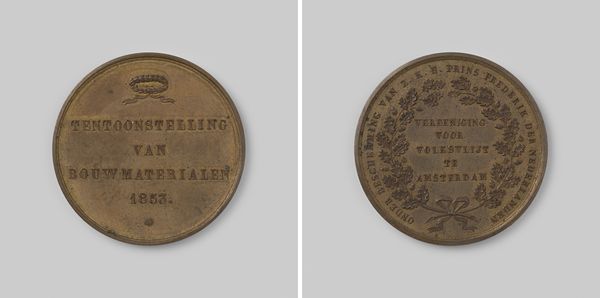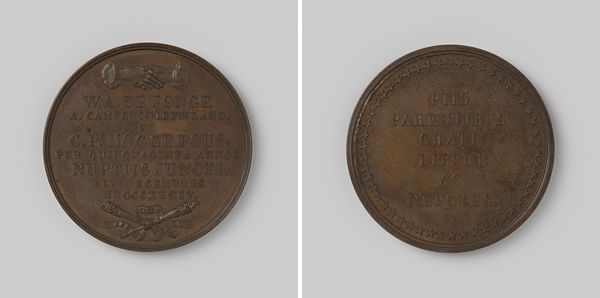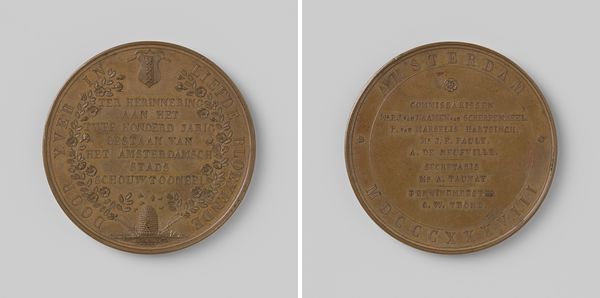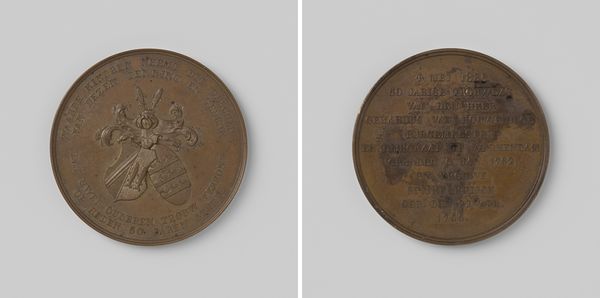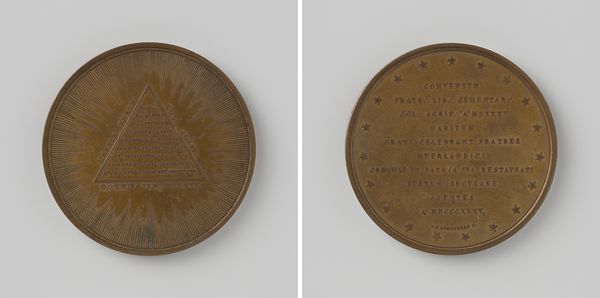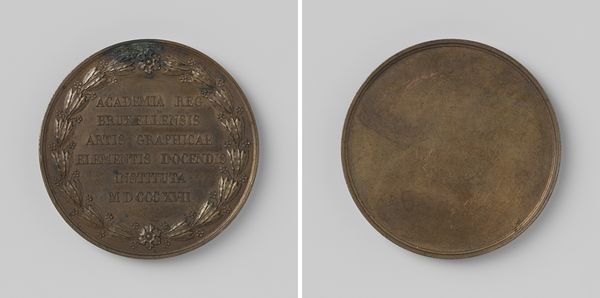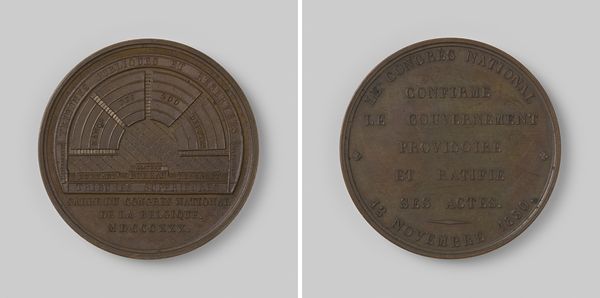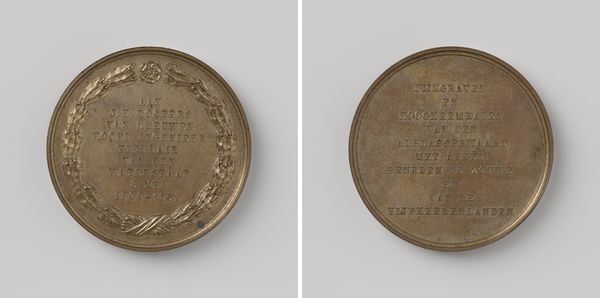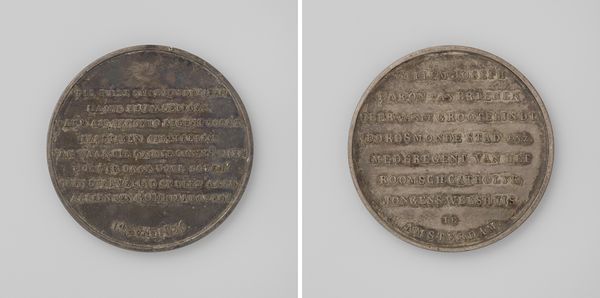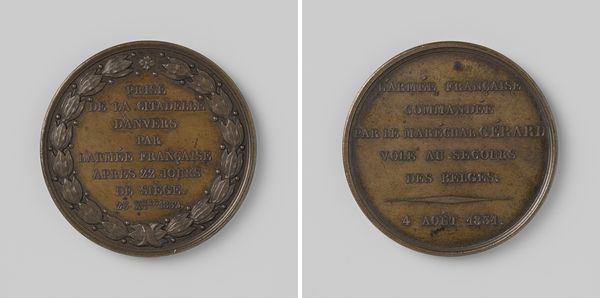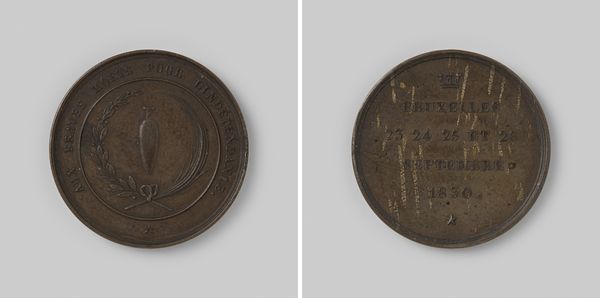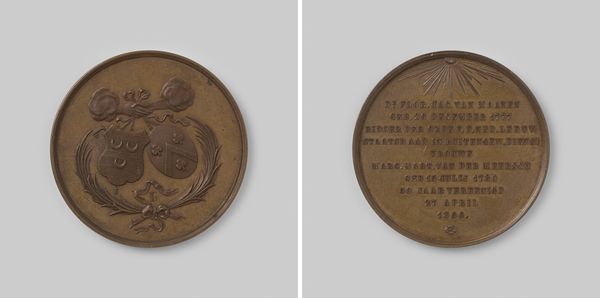
print, metal, bronze, sculpture
#
neoclacissism
# print
#
metal
#
bronze
#
geometric
#
sculpture
#
history-painting
Dimensions: diameter 2.8 cm, weight 6.87 gr
Copyright: Rijks Museum: Open Domain
Editor: Here we have a bronze medal from 1832 by Joseph-Pierre Braemt commemorating the opening of the Charleroi Canal to Brussels. It feels very official and…well, maybe a bit stuffy? What stands out to you? Curator: I see a powerful assertion of nation-building in the wake of the Belgian Revolution. Canals, like this one, were vital arteries of industrialization and centralized power. This medal isn't just about infrastructure; it’s a declaration of sovereignty. Look at the inscription "Royaume de Belgique"—it emphasizes the new nation-state forging its identity through these massive projects. Editor: So, it's less about transportation and more about political messaging? Curator: Exactly! And think about who benefits from such projects. Who owned the factories that depended on these canals? Whose products were being shipped? Whose land was displaced? It is always imperative to understand who has access and power within the context of public works and policy. Editor: That makes me reconsider the…geometric and neoclassical imagery. Is it supposed to invoke the Roman Empire as a sign of legitimacy? Curator: Precisely! It's harking back to a past empire to create new ones – industrial and political. It’s a conscious effort to place the new kingdom within a historical lineage of power, all while ignoring any power struggle. It seems that canals served much more than only transport goals! Editor: I hadn’t thought about it that way. I was focused on its surface formality, rather than the implications around industrial growth. Curator: Which is precisely the intent: that infrastructure is never apolitical; it always has underlying narratives about economic disparity.
Comments
No comments
Be the first to comment and join the conversation on the ultimate creative platform.
